#DEITY : Tengri
Explore tagged Tumblr posts
Text
the pathologic Kin is largely fictionalized with a created language that takes from multiple sources to be its own, a cosmogony & spirituality that does not correlate to the faiths (mostly Tengrist & Buddhist) practiced by the peoples it takes inspirations from, has customs, mores and roles invented for the purposes of the game, and even just a style of dress that does not resemble any of these peoples', but it is fascinating looking into specifically to me the sigils and see where they come from... watch this:
P2 Layers glyphs take from the mongolian script:

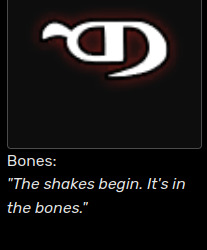

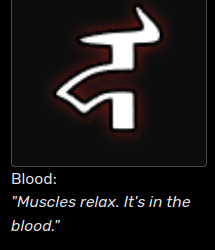



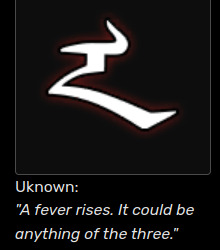
while the in-game words for Blood, Bones and Nerves are mongolian directly, it is interesting to note that their glyphs do not have a phonetic affiliation to the words (ex. the "Yas" layer of Bones having for glyph the equivalent of the letter F, the "Medrel" layer of Nerves having a glyph the equivalent of the letter È,...)
the leatherworks on the Kayura models', with their uses of angles and extending lines, remind me of the Phags Pa Script (used for Tibetan, Mongolian, Chineses, Uyghur language, and others)


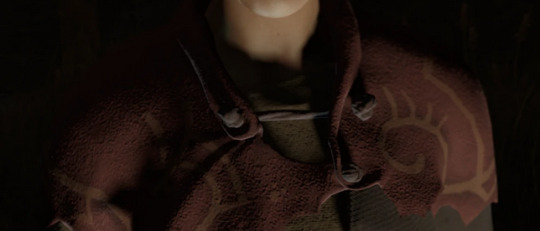
some of the sigils also look either in part or fully inspired by Phags Pa script letters...






some look closer to the mongolian or vagindra (buryat) script

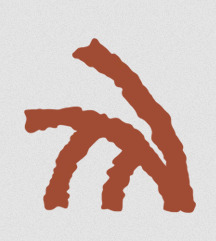
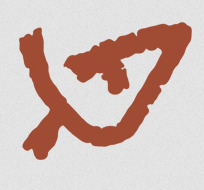


looking at the Herb Brides & their concept art, we can see bodypainting that looks like vertical buryat or mongolian script (oh hi (crossed out: Mark) Phags Pa script):
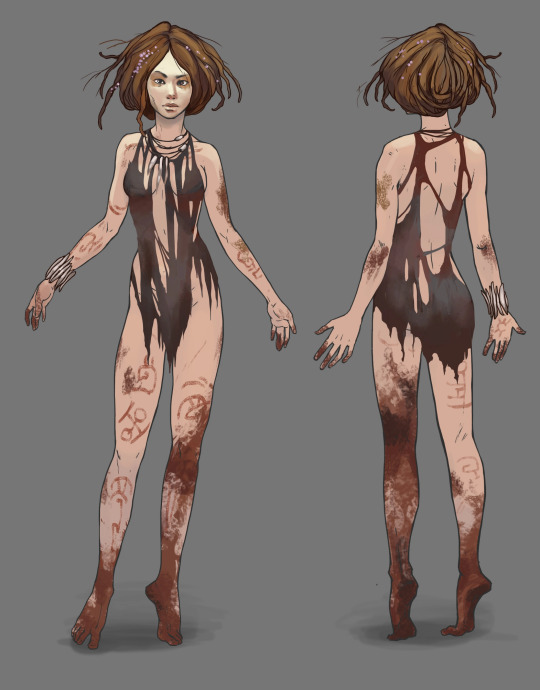
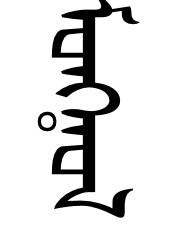
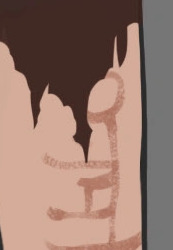
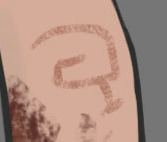

shaped and reshaped...
#not sure how much. what's the word. bond? involvement? not experience. closeness? anyone in the team has with any of these cultures#but i recall learning lead writer is indigenous in some way & heavily self-inserts as artemy [like. That's His Face used for#the p1 burakh portrait] so i imagine There Is some knowledge; if not first-hand at least in some other way#& i'm not in the team so i don't know how much Whatever is put into Anything#[ + i've ranted about the treatment of the brides Enough. enough i have]#so i don't have any ground to stand on wrt how i would feel about how these cultures are handled to make the Kin somewhat-hodgepodge.#there is recognizing it is Obviously inspired by real-life cultures [with the words;the alphabet;i look at Kayura i know what i see]#& recognizing it Also is. obviously and greatly imagined. not that weird for you know. a story.#like there is No Turkic/Altaic/Mongolic culture that has a caste of all-women spiritual dancers who place a great importance on nudity#as a reflection of the perfect world and do nothing but dance to bring about the harvest. ykwim...#like neither the Mongols nor the Buryats nor the Tibetans dress the way the Kin does. that's cos the Kin is invented. but they're invented.#.. on wide fundations. ykwim......#Tengrism has a Sky Deity (Tengri) with an earth-goddess *daughter* whereas the kin worship an Earth-Goddess mother of everything#+ a huge bull. Buddhism has its own complete cosmogony & beliefs which from the little I know Vastly Differ from anything the Kin believes#like. yeah. story. but also. [holds myself back from renting about the Brides again] shhh...#neigh (blabbers)#pathologic#pathologic 2
304 notes
·
View notes
Text
Tengri
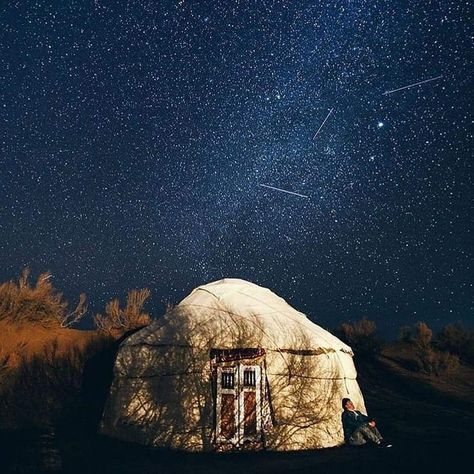
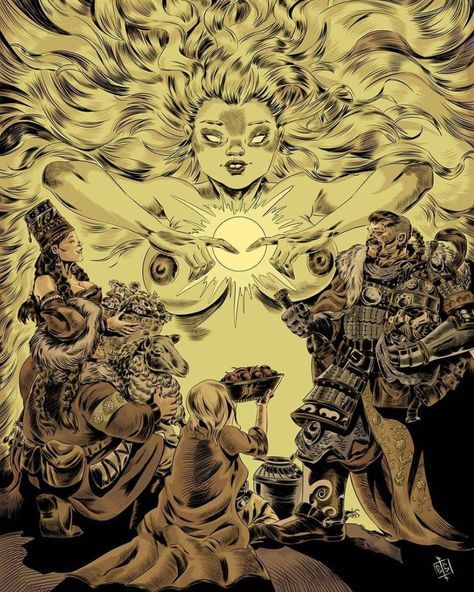
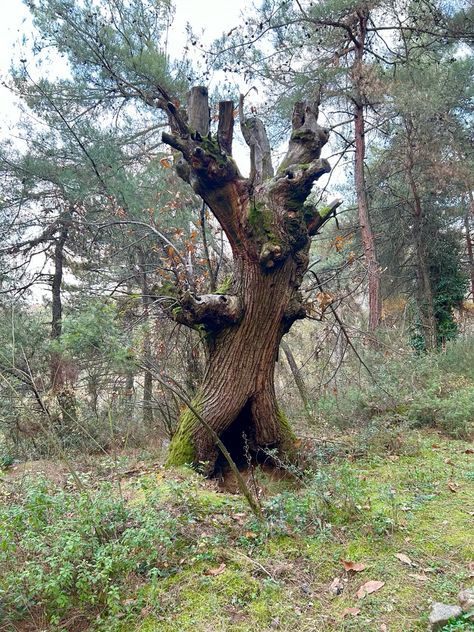
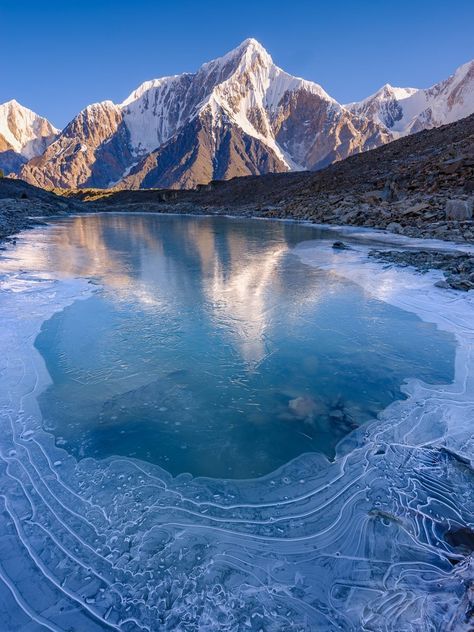
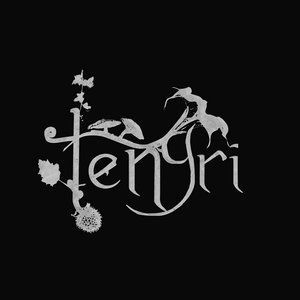

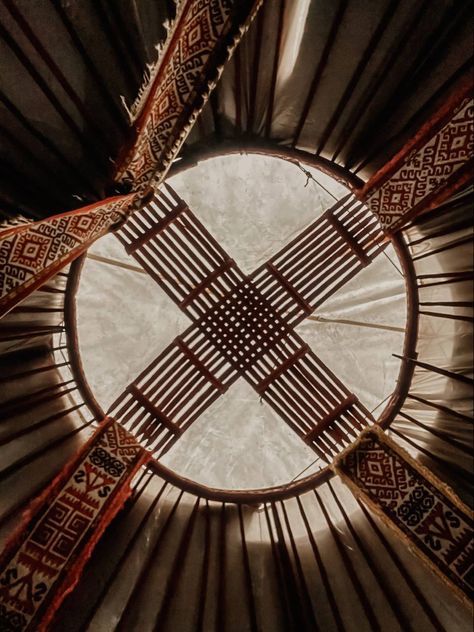


The sky god
Taking requests!
requested by @tengritexas
17 notes
·
View notes
Text
Tengri, the great Deity, born before the existence of the world, is older than time itself, and what this very world created, is the Cosmos and the Sky itself, with their endless expanses: (Is simply exists).
Me (little human with some kind of neurodivergency, who tries to do what they can without going crazy): Hello, Dad! Walking home, I noticed a few bright yellow dandelions. They reminded me of you and your Sun, so I leave them to you as an offering. I hope you will enjoy!
Tengri (despite all His greatness and strength, being one of the most kind, gentle and loving the world and people Deities): Oh, thank you, my dear, this is wonderful. I'm glad you liked it. :)
Тенгри, великое Божество, рождённый до существования мира, старше самого времени и что этот самый мир создал, является самим Космосом и Небом, с их бескрайними просторами: (Просто существует).
Я (маленький человек с какой-то нейроотличностью, что пытается делать что может, при этом не сойти с ума): Привет, Пап! Идя домой я заметила несколько ярких жёлтых одуванчиков. Они мне напомнили о Вас и Вашем солнце, поэтому я оставляю их Вам как подношение. Надеюсь, Вам понравится!
Тенгри (не смотря на всё Своё величие и силу, являющийся одним из самых добрых, нежных и любящих мир и людей Божеств): Ах, спасибо, моя дорогая, это прекрасно. Я рад, что тебе понравилось. :)
#Quday :: Kök Tengri :: ⌞🏞☁️🩵⌝#A piece of my mind :: ⌞☔️🍨🩷⌝#Tengri#Tengrism#Tengri deity#Deity work#Тенгри#Тенгрианство#Тенгризм#старое
12 notes
·
View notes
Text
If you are still interested in Turkic shamanism, I would recommend Enlivening Tengriism by Umut R. Sazçalar. It's a very short introduction to Turkic shamanism.
Hey Pagan Side Of Tumblr Is There Any Turkic Pagans Here
Okay so im from turkey and i would like to know more about tengrism, turkish pantheon or shamanism. I am still new to the occult and mostly im practicing divination but i really would like to learn more about my culture. Please reblog this so turkic witches can see. And if you are a turkic witch please dm me, it would be very nice to meet you🌸
#tengri#pagan#pagan witch#deity work#deity readings#pagan wicca#norse pagan#paganpride#paganism#pagans of tumblr#deity dialogues#communicating with deities#shaman#shamanism#baby witch#witchblr#witch stuff#witchy#witches#witch#witchcraft#central asia#turkmenistan#hungary#turkey#turkic
12 notes
·
View notes
Text
Kayra Khan: The Creator and Chief God in Turkic Mythology
The Origins and Supremacy of Kayra KhanDivine LineageThe Greatest of the GodsCreation and Deity HierarchyCreator of AllDetermining the Fate of the UniverseThe Tree of LifeKayra Khan in Mythological TraditionsAltai Creation MythEquivalence with Gök TengriSons and Abstract AttributesFour SonsUlgenKizaganMergenKayra Khan’s Majesty and CharacteristicsAbstract NatureSeasonal ManifestationAlternative…
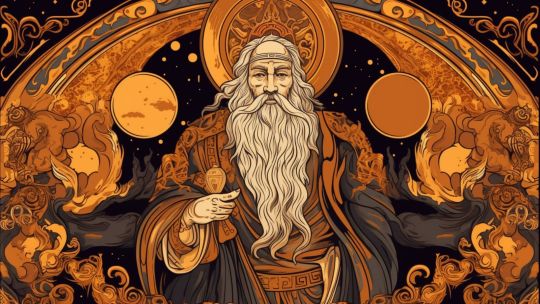
View On WordPress
#Altai mythology#Chief god#Creation myth#Divine lineage#Gök Tengri#Kayra Khan#Mythological traditions#Turkic cultural heritage#Turkic deities#Turkic mythology
1 note
·
View note
Text
finally watched barbie last night. i think it was refreshing to see gerwig's exploration of population exchange in europe during the chalcolithic age. barbies are clearly coded to be early european farmers, living in a comfortable yet stagnant environment of europe at the tail end of the ice age, with a culture revolving around female fertility (notice the second character introduced is a pregnant barbie). the second sequence shows up ken(gosling)'s enterance into the story on beach, mirroring the arrival of western steppe herder cultures as glaciers in europe retreated.
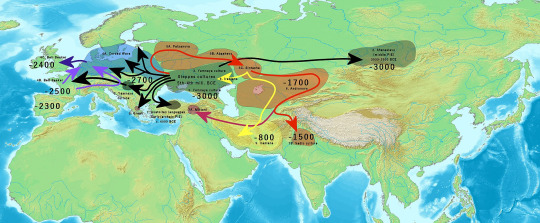
once barbie and ken venture into the "real world" (prohpetic vision of the bronze age), ken adopts advanced technologies like the horse (horse), patriatrchy (worship of a male solar deity), and cars (the wheel, expoundable into the horse-driven chariot). his donning of the fringe jacket and cowboy hat stir within the audience a yearning for westward expansion, from the pontic steppe through the pannonian basin and beyond.

ken transforming barbieland into the kendom mirrors the replacement of early european farmer (vinča, varna cultures etc.) with corded ware and bell beaker cultures, settled iterations of the kens' previously pastoral culture. the only barbie not assimilated into the new cultral zeitgeist is weird barbie (basques), herself a cultural isolate even compared to other barbies pre-invasion.
the final battle scene between the two ken factions places particular focus on archery, hallmark of the mongol civilization, which was the last of the steppe invasions of europe. notice in this situation, gerwig's bravery in correctly having ken (asian) represent the kingdom of hungary (asian), whereas ken (gosling) is of course the ever-lasting scythian spirit emanating from the steppe. some scholars have suggested the light-blue void where the last battle takes place to be a metaphor tengri.
some other stuff happened as well but i didn't really get how that fit into the greater story i guess. what was the deal with the old jewish lady LOL !
5K notes
·
View notes
Text

Tengri, central to ancient Turkic and Mongolic beliefs, was revered as the sky deity embodying the vastness of the heavens. Unlike many gods in organized religions, Tengri was not depicted through idols or worshipped in temples. Instead, Tengriism was deeply rooted in nature, with the open sky serving as his dwelling. Followers of Tengri believed in his omnipresence and omniscience, invoking him as a witness during oaths or as a guide before major events like battles. Leaders and warriors would pray to Tengri on mountain summits or in seclusion, calling upon his strength and protection.
Tengri’s favor or displeasure was thought to be reflected through natural phenomena. Sudden weather changes, storms, or other natural signs were interpreted as his responses to human actions, underscoring the belief that Tengri maintained a watchful gaze over the world. This connection to the natural world and the cosmos formed the core of Tengriism, shaping the spiritual lives and cultural values of early Central Asian societies.
#Tengri#Tengriism#Ancient Beliefs#Sky God#Central Asian History#Nomadic Spirituality#Mongolic Traditions#Turkic Culture#Nature Worship#Shamanism#Ancient Religions#Steppe Traditions#Cultural Heritage#Spirituality
9 notes
·
View notes
Text
<3
Walking your friends home as a devotional act to Hermes
Walking with a friend to their lectures as a devotional act to Hermes
Going somewhere for no reason other than to accompany them on their travels as a devotional act to Hermes
#keep em coming#helpol#hellenic devotion#hermes devotion#hermes devotee#hecate devotion#tengri devotee#Bastet#Thoth#apollo devotion#apollon deity#hellenic polytheism#paganism#paganblr#apollo worship#apollo deity#apollon worship#hellenic polytheistic#hellenic paganism#hellenic worship#hellenic polythiest#hellenic deities#hellenic pagan#hellenism#pagan community#pagans of tumblr#pagan#witchblur#deitywork#hecate deity
851 notes
·
View notes
Text
The Many Lives of Mongolian Shamanism

The following is excerpted from Sky Shamans of Mongolia: Meetings with Remarkable Healers by Kevin Turner.
For thousands of years, Mongolia has been a nexus of Eurasian shamanisms that competed, mixed, and meshed across our planet's largest continent. Shamanism appears to have emerged with the very dawn of human consciousness, but archeologists can probably speak with confidence about only the past 30,000 to 70,000 years.
Archeological discoveries in Eurasia alone indicate that the practice of shamanism reaches back at least to 35,000 BCE, easily making shamanism the oldest spiritual practice known to mankind. Modern religious faiths such as Buddhism and Christianity are toddlers in comparison, and psychology is a mere newborn.
The word shaman originated from the Tungusic tribal language groups (from areas to the north and east of Mongolia), which are related to Mongolic languages. These are both part of the broader Altaic language group, which includes Turkic, Manchurian, and scores of other Inner Asian and Siberian languages, and may include Korean and Japanese at the easternmost reach. The modern term "shaman" has now been adopted by many as a catch-all word to describe those who by spiritual means seek direct access to information and healing power not ordinarily available.
The nomadic northern Siberian shamanic traditions tend to retain the highly individualistic aspects of shamanism; by contrast, a most interesting facet of Mongolian and Inner Asian shamanism is the amalgamation of the shamans' direct experiences of other realities with a religious belief system known as Tengerism (Heaven or Sky God-ism). Tengerism originated in Sumeria, one of humanity's earliest civilizations, and probably derived from the early experiences of the shamans, prophets, and mystics of pre-Mesopotamian eras.
The modern Mongolian term Tenger (or Tengri), meaning both "sky realms" and "sky spirits," almost certainly derives from the Sumerian word Dingir, also meaning both "sky realm(s)" and "deity(-ies)." The concept of divinity in Sumerian was closely associated with the heavens, evident from the shared cuneiform sign for both heaven and sky, and from the fact that its earliest form is a star shape. The name of every deity in Sumerian is prefixed by a star symbol.
Mircea Eliade proposed that Tengrism may be the closest thing we have found to a reconstructed proto-Indo-European religion. It is also evident that Tengrism's three-layered worldview is nearly identical to the tripartite world found in many kinds of shamanism, as well as the Vedic triloka ("three realms") world structure.
In Mongolian, one who travels the realms of the Tengers is called a Tengeri--"sky-dweller; sky-walker." I like to think that Luke Skywalker, the young warrior-shaman Jedi knight of the fictional Star Wars films, may have inherited his name from this tradition. Interestingly, the BBC reports that in censuses taken in 2001 regarding spiritual beliefs, hundreds of thousands of people selected "Jediism" as their faith of choice--such is the power of shamanism even in our modern myths and legends.
The earliest authenticated records of Mongolian shamanism go back to the beginnings of the Hunnu Dynasty, 209-93 CE (also known as the Xiongnu in Chinese records). Mongolian legend tells us that, during this time, a nine-year-old Hunnu boy united with a she-wolf, engendering the modern-day Mongolian people. The headdress of a shaman (circa 300–100 BCE) was found in one of the graves of Noin-Ula (Mongolian: Noyon uulyn bulsh) in northern Mongolia, and is strikingly similar to the Mongol Darkhad headdress of today. The fabric's colors, weaving methods, and embroidery are also similar to those found in fabric produced by Scythians in the Greek colonies on the Black Sea coast, leading scholars to draw links between these ancient cultures. (Scythian tribal areas were just west of Mongolian territories.)
According to historian and researcher Otgony Purev, shamans played an important role in diplomatic efforts and treaties with neighboring nations. The Hunnu emperors even constructed permanent shamanic shrines, and encouraged individual shamans to synthesize their diverse practices into a national religion. "Shamanist religion" then became part of the organizational basis of governmental and military activity.
Shamanism became the main source of education and ideology for the earliest pre-Mongol states. This continued for nearly 400 years, and ties to education remain influential in the Mongolian shamanic revival even today. With the disintegration of the Hunnu Dynasty, institutionalized shamanism returned to its more natural, individualistic and autonomous forms across a series of disparate Inner Asian kingdoms that spanned a millennium.
31 notes
·
View notes
Text
Erlik - mythology and information
Erlik, Erlig, Erlik Khan, Erleg or Yerleg (Hungarian mythology comparable to Ördög) is the deity of death and the underworld, also known as Tamag (hell) in Turkic mythology. Er (or yer) refers to Earth, the depths in which Erlik resides. Erlik summons death, plague, and bad spirits from the underworld to torture humanity and transport their souls to his domain. Tengrism is not founded on a written corpus, but rather on the spiritual experiences of Turkic people, hence there are no universally accepted doctrines among Turkic people. Erlik has previously been referenced in the Orkhon texts and has a persistent role as the lord of the underworld in Turkic belief systems.

Mythology-
In Turkic mythology, Erlik had a role in the genesis of humanity. He slew the messenger-god, Maidere/Maydere, and is a sin-teacher. He is sometimes symbolised by a totemic bear. Erlik was the deity of evil and darkness in Turkic mythology, as well as the king of the underworld and the judge of the dead. Erlik is Ülgen's sibling; both were formed from Kayra (Tengere Kayra Khan). He wants to be equal to Ulgen, so he creates his own land. He was imprisoned in the 9th stratum of the earth and grew antagonistic to the top world, the realm of light. According to the Khakas, Erlik lives in the lowest underworld, in a copper mansion with gold furnishings.
According to Altai folklore, Erlik created the spirits (İye) while still in heaven. When Erlik claimed divinity for himself, he was driven out and descended to earth along with his spirits. Another Altai tale holds that God (Tengri) gave Erlik a hammer and an anvil, but took away his power when Erlik used them to create evil.
According to another mythology, reported by Vasily Radlov, God commanded the first person to plunge into the primordial seas and retrieve a handful of dirt from the sea's bottom. However, the first person wanted to hide some dirt so that he might eventually establish his own planet. But the earth in his mouth increased, so he spit it out. Kayra, who created the universe in this tradition, banished the first human from the celestial realm as a kind of punishment and called him Erlik.
In another story, mankind were immortal before the arrival of Erlik. People and animals overpopulated the earth until a crow proposed bringing Death into it. So people summoned Erlik, and death entered. First, everyone knew when they'd die, so they lived in terror until Tengri concealed their date of death.
Erlik's malevolent spirits inflict misfortune, disease, and death among humans. These ghosts are envisioned as Erlik's helpers. Aside from this, his nine sons and daughters support their father's nefarious intentions. Erlik's daughters, in particular, strive to persuade a shaman to alter his mind as he tries to approach Ulgen with their beauty. Erlik causes all forms of disease and demands sacrifices from the people. If they do not sacrifice to him, he collects the dead remains of those he has slain and transports them to this lower realm, where he makes them his slaves. As a result, when illness strikes, people become afraid of Erlik and make numerous animal sacrifices to him, particularly in the Altai Mountains.
In shaman prayers, Erlik is characterised as a creature with a pig's face and teeth and a human body. Aside from his face, he is an elderly man with a well-built physique, dark eyes, brows, and moustache. According to the Dolgans, Erlik led Mammoths to the underworld. When they attempt to return to the surface, they freeze to death as punishment.
The dinosaur Erlikosaurus is named after him.
14 notes
·
View notes
Text
tsagaan sar (mongolian lunar new year) is on march 1st! heres some things you can do to celebrate. this is how i personally do it from what i grew up doing :)
wake up before sunrise and get ready along with a nice outfit. its usually traditional clothing, but putting on a pretty outfit is just fine.
make suutei tsai (mongolian milk tea) and give some to the nature/land spirits first as they are just waking up for the spring. i also offer it to Father Heaven (Tengri) and Mother Earth (Etugen). make sure to greet the spirits and deities beforehand as well.
how i personally make suutei tsai is by first boiling black tea. remove the leaves and add whole milk, 1:1 ratio. then boil once. after, add a pinch of salt or even a bit more depending on how much you made. some even add a bit of ghee, so if that seems to strike your fancy you can add that as well.
watch the sunrise. my grandmother would tell me that watching the sunrise reminds us of a new beginning for the new year and the return of spring.
clean your house. i personally like to do a deep clean of the whole house alongside removing clutter. if you live on a farm, you should clean up your farm as well.
thank the gods and the spirits. i personally like to burn herbs and dried flowers and/or light a candle or two as an offering. then i thank them for always providing me with support and blessings.
make food! it doesn't have to be traditional mongolian food, it can just be foods and dishes you enjoy. although if you do want to make traditional foods, i recommend making gambir (basically mongolian pancakes) and/or khailmag since theyre quite easy to make. you should also share the food with your loved ones as well!
set goals and acknowledge what you appreciate in life. this isn't inherently traditional but my father would make me write down such things as a way to teach me how to be grateful and ambitious.
amaar baina uu? ("are you living peacefully?", a greeting on tsagaan sar). thank you for reading!!

#mongolia#mongolian#mongolian tradition#mongolian culture#mongolian celebration#tsagaan sar#mongolian new year#tengrism#tengerism#tengriism#tengeriism
2 notes
·
View notes
Note
i've come here to mope in my pookie's question box because i got a hate comment and i'm pretty bummed out about it because it was for a drabble i actually liked 💔 i can't even tell if the person was a poc or not because the drabble was leaning towards a poc reader but anyways..!!! how do u deal with the haters pookie...do you threathen to make out with them
whoever's making hate comments needs to know that i'm going to hex them. i mean like curse of hades, curse of ra, curse of odin, curse of tengri i'm pulling out every divine deity from the book to wish them very ill. more ill than a merchant on the silk road in the 14th century...
but also what's such a bummer is that people get all pissy abt poc!coded reader in some fics 💔 (mind u, like so many fics since the dawn of time haven't been written around the idealised petite white reader whos nlog ☹️) honestly i dont think ive ever gotten a hate comment for my writing/this blog apart from that one fiend who goes around in people's inboxes saying 'it is CANON that xyz' (watch me jinx myself now) but! i have gotten hate on other blogs (kpop/gifs etc) tho 😟 and the best thing is to literally just never answer/block it 😫
so many people who make these comments/sends these asks want their words to sting, and they obviously want a reaction or a rise so u just gotta leave them be and let them seethe on their own 😚
#know that if anyone sends u a hate comment again im buying a sword and hiring the colosseum for a duel#— answered !
4 notes
·
View notes
Text
What/Who is Umay? Tengrist deities
Hey everyone! So in my itty bitty amount of time on tumblr I found there isnt many resources in Tengrism so Im here to provide for all my fellow Pagans and Shamans
Umay (pronounced Umai) is the mother of nature and of the "middle world" the middle world being Earth and the physical universe!
She is associated with protecting the unborn and maintaining the harmony of nature.
Although She is her own diety she is an extention of Tengri, God of the blue Sky.
"Adjacent religions" in which a similar description is made include religions like Wicca (mother of the earth)!
Just a little snippet today! Hope you enjoyed :>
6 notes
·
View notes
Text
Thing about Tengrism I love is there is almost no canon, the only two I know are Tengri is superior, Deity or forse, and to follow it's philosophy of being kind.
I know six creation myths. And they all are true. It depends on region. I heard more turkish version with Ak Ana, more mongolian with Ulgen and Erlik. In my region Tengri was born out of the egg. And they are all right.
I didn't know about Erlik or Ulgen until I started to talk with other Tengrist. They didn't know about my local belief, that Sun and Moon are Tengri's eyes. There is no right pantheon. There could be Gods in one region that don't exist in others. I found it beautiful.
Umay Ana has different roles in different regions. On one land She is Goddess of fertility and virginity. In others She is only Earth. In others She is Goddess of children. She is all of it, even if in other communities some of it do not acknowledge.
Tengri is seen as Deity to some, or forse, the world itself for others and they are all right.
I really like that there is no dogma. That you should to figure it out yourself, what is the best for you. With talking to others. Because there is so little left. Mongolian Tengrism, Turkish Tengrism, Kazakh Tengrism, Siberian Tengrism and many more, they all has differences, but the core is Tengri. And, at the end of the day, you need to find, what is the most appealing to you.
Gods, I fucking love Tengrism.
13 notes
·
View notes
Text
I can’t find a source for this but I remember hearing somewhere that this is sort of how the Mongol empire treated religion, with the idea that their god Tengri was specifically the god of the Mongol people, and they didn’t want non-Mongols worshipping him, and so they were exceptionally religiously tolerant (which is definitely true)
Whether it’s true or not I think it’s a really cool concept, and one I’ve decided to implement (fairly loosely) in my take on the “big homogenous human empire” in my homebrew setting
In the far reaches of the empire, citizens are actively barred from converting to the empire’s official religion, with the right to do so (and all the prestige and influence that comes with it) only granted to those who earn the emperor’s favour or rise to prominence in the imperial court
Priests of the religion spend most of their time ensuring the wrong people aren’t practising their tenets (sometimes not even able to practise them themselves) and trying to keep the secrets of the faith (sometimes knowledge as simple as the religion’s primary deity or if they even have one) from getting out
The result of this secrecy is often theological debates where non-imperial theologists argue not which religion is closer to the truth, but which religion is closer to that of the emperor, claiming their imperial majesty surely worships “my god” or practises “my way of worship”
Thus concludes yet another session of thinly-veiled-attempts-to-infodump-about-the-fantasy-world-in-my-head
Cleric who's trying to make everyone else atheists.
It's their god, not anyone else's.
#dnd#please don’t hurt me if the first paragraph is completely innacurate I don’t remember where I heard it from#I just thought this idea was cool
2K notes
·
View notes
Text
A Brief Explanation of Jewish Cultural Epochs (Slave Labor)
Kazakh: The Japanese Hanjo, Neanderthals, have taken Tengri, their language for currency and hotel, and reversed it, so it merges; hence, the speaking of Tengri backwards, Hebrew, is entrapment in a hostel.
Babylon: The concept of the deity, the cuneiform picture, and the cuneiform drawing of letters, available if refusing swine, is the empathy removed from the enemy, the refusal to regard enemy force as son or daughter; the mating game, without raising the past paramour.
Titus: The Jew, is the common stage, the cavorting with children and animals, as gay men, the stage as beyond war, and instead, play; the literature, as the improper ideal, that being beyond nature, as viewed through ideal to nature instead; the platonic.
Jesus: The blues and rhythm, as the band of those destroying a culture, through traveling nomad, the institute; the teaching of children, to dance and play, instead of bear war and tidings, the unserious objective of the Israelite.
Lodge: The poor man, as the militia, outnumbering the rich man, the gladiator; the print of the head of the coin, as the leader, with the back marked in currency of the past leader; a Celtic culture, however with coin upon bust, as the authorization to provoke an act, considered criminal unless in bearing of heraldry.
China: The countries of the world, as in prefecture, the university; therefore the clergy, as the leaders, through the Rabbinical, the Muhammadan, the homosexual; the netting and knighting of the world, as having luxury, without pay; the option removed, to the common feed, without pork, the aphrodesiac, hence been born slave, the tithe.
Renaissance: The shaved head, as slave soldier, having been born to act by labor of common mirth, the cooperative, a commune upon insured debt; the others, as having supported the self, the colony of state, from Europe to Asia, and inside Africa and up into Russia, the engineered project; the Hebrew tongue, as out of Latin, with a proper script of Kiev, the engineered project upon labor.
Colony: The New World, as having those implacing and implicit in creative, as slave, having held such as Protestant, hence the individual insisting upon compliance to medicine, as the slave, and those otherwise, having imbibed liquor and marijuana outside of care of common facility; the creation of paperwork, to bind the slave, and the common police, as differentiating prison and hospice, the combination to be the corrections, the separation upon statement to be the clearing of suit.
Holocaust: The calculation of wages labor, outside of performed family of difference of workshop; hence any of those performing wage to pay police in product, to acquire trade, and any of those otherwise, to be the Catechism; therefore the Jew, be working in common labor, to become the police officer, the minister of government.
Progressivism: The state of speech, as the spy, hence any raised by grooming, selected by felony, placed by patriotism, or otherwise bred by union, or any combination thereof, having found embassy, in the community, the more laws the poorer production, but the more powerful the leader; the dominance of America, under African laws imposed, the taken blacks as the heralds of the United States imperium and its resulting dominance over the voice of the people.
0 notes